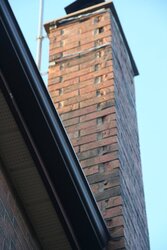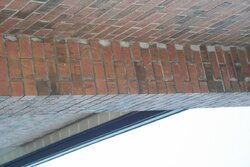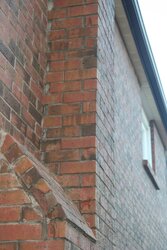The brick on my chimney has started to deteriorate, especially on the south side. I received a few quotes and everyone agrees that the portion above the roof should be rebuilt, but I am getting differing opinions on what to do below the roof.
Some masons are recommending cutting out only the damaged (spalled or cracked) bricks and replacing them while others have recommended that I should tear down the whole chimney and rebuild it as it is only a matter of time before the other bricks incur similar damage.
Obviously rebuilding will cost more than replacing the individual bad bricks, but I don’t want to do a cheaper repair if it means I’m going to have to revisit it in the near future. I have researched here and online and still don’t feel I have a good grasp of how likely the remaining bricks are to deteriorate.
I attached a few photos. I’d like to get opinions from any experts or even people who have gone through this. I’d like to figure out the scope I want and then I’ll get the contractors that I’m most impressed on to requote on the same scope.



Some masons are recommending cutting out only the damaged (spalled or cracked) bricks and replacing them while others have recommended that I should tear down the whole chimney and rebuild it as it is only a matter of time before the other bricks incur similar damage.
Obviously rebuilding will cost more than replacing the individual bad bricks, but I don’t want to do a cheaper repair if it means I’m going to have to revisit it in the near future. I have researched here and online and still don’t feel I have a good grasp of how likely the remaining bricks are to deteriorate.
I attached a few photos. I’d like to get opinions from any experts or even people who have gone through this. I’d like to figure out the scope I want and then I’ll get the contractors that I’m most impressed on to requote on the same scope.



Last edited by a moderator:


